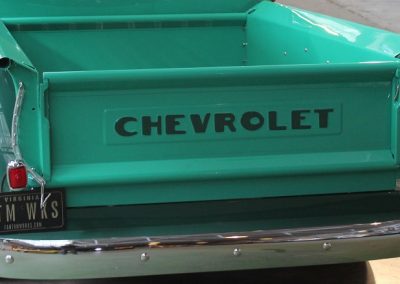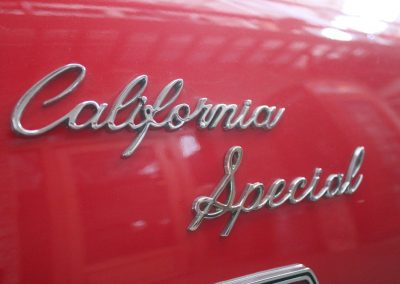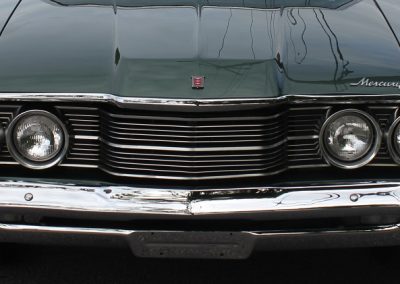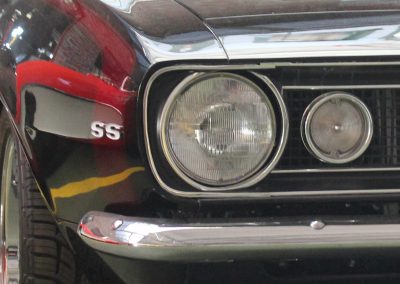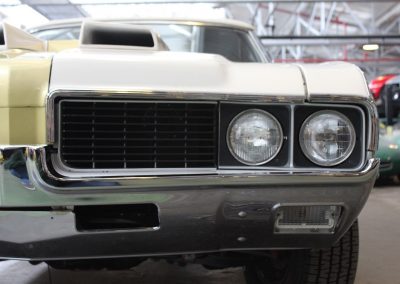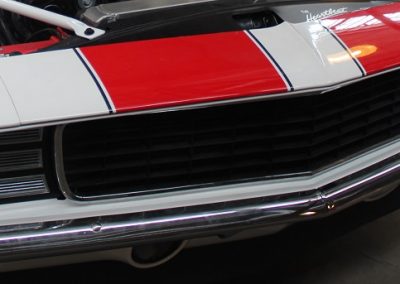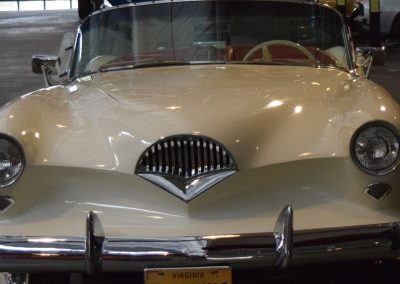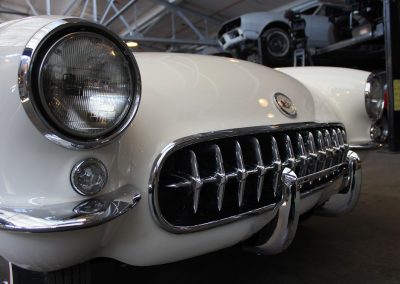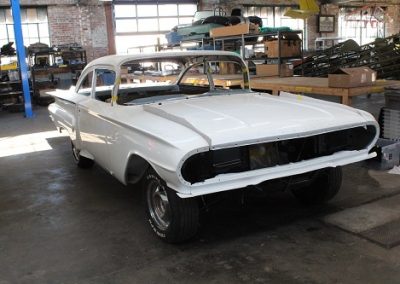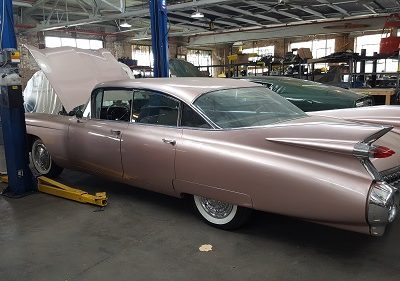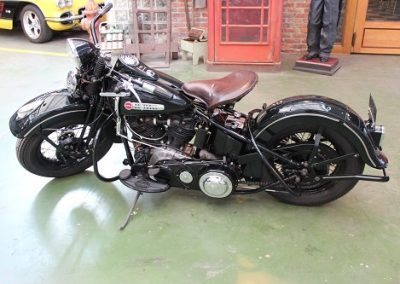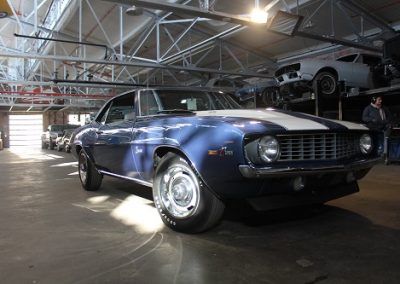1975 Bricklin SV-1

As seen on Season Seven of FantomWorks
Owner Insight:
Explore the Project Galleries
Arrival
Mechanical
Body & Paint
Trim & Detail
Finish
The Bricklin SV-1 is a gull-wing door sports car that was assembled in Saint John, New Brunswick, Canada. Manufactured from 1974 until late 1975 for the American market, the car was the creation of Malcolm Bricklin, an American millionaire who had previously founded Subaru of America. The car was designed by Herb Grasse. The Bricklin factory was not able to produce vehicles fast enough to make a profit. As a result, the company went into receivership, owing the New Brunswick government $21 million, and fewer than 3,000 cars were built.
The model name SV-1 was an acronym for “safety vehicle one”. The original idea for the Bricklin SV-1 was a safe and economical sports car, but due to the added weight of the safety features, the car was inefficient and simply a safe sports car. The Bricklin was designed for safety with an integrated roll cage, 5 mph (8.0 km/h) bumpers, and side beams. The body was fibreglass with bonded acrylic in five “safety” colours: white, red, green, orange and suntan. The cars had no cigarette lighters or ashtrays “to discourage smoking”. A non-smoker, Malcolm Bricklin believed it was unsafe to smoke and drive. The Bricklin is supposedly the only production vehicle in automotive history to have factory powered gull-wing doors that opened and closed at the touch of a button as standard equipment. (The later DeLorean DMC-12’s gull-wing doors operate manually, and the Tesla Model X’s rear doors are referred to as falcon-wing doors rather than gull-wing due to the extra hinge.)
The first Bricklin concept car, later dubbed Grey Ghost, was built by Bruce Meyers of Meyers Manx dune buggy fame in California. Its initial powerplant was a Valiant slant six.
Power came from a 360 cu in (5,899 cc) AMC 360 V8 for 1974. Later cars used a 351 cu in (5,752 cc) Ford Windsor V8. Performance figures rated favorably against the contemporary Corvette, which most auto magazines used as a point of comparison. The front suspension used A-arms and coil springs, while the rear used leaf springs on a live axle. For the 1974 model year, 772 cars were produced, 137 of which had four-speed manual transmissions. All 1975 and 1976 cars had automatic transmissions. In 1974 potential owners were given a choice of transmission and color whereas in 1975 there was only a choice of color.
In a bid to reduce production costs, Bricklin attempted to bond fibreglass to acrylic plastic—something the plastics industry had not perfected at the time—resulting in a high failure rate and high production costs (some panels cracked while still in their molds). Cars also tended to overheat due to using a single radiator opening in the 1974 model. Doubling the size of the opening failed to solve the problem. Running examples today generally feature a retrofitted larger radiator.
It soon became obvious that Bricklin’s claims of a “high performance safety car” were not realized in the production models. It is believed that fewer than 1200 Bricklin cars still exist.






















